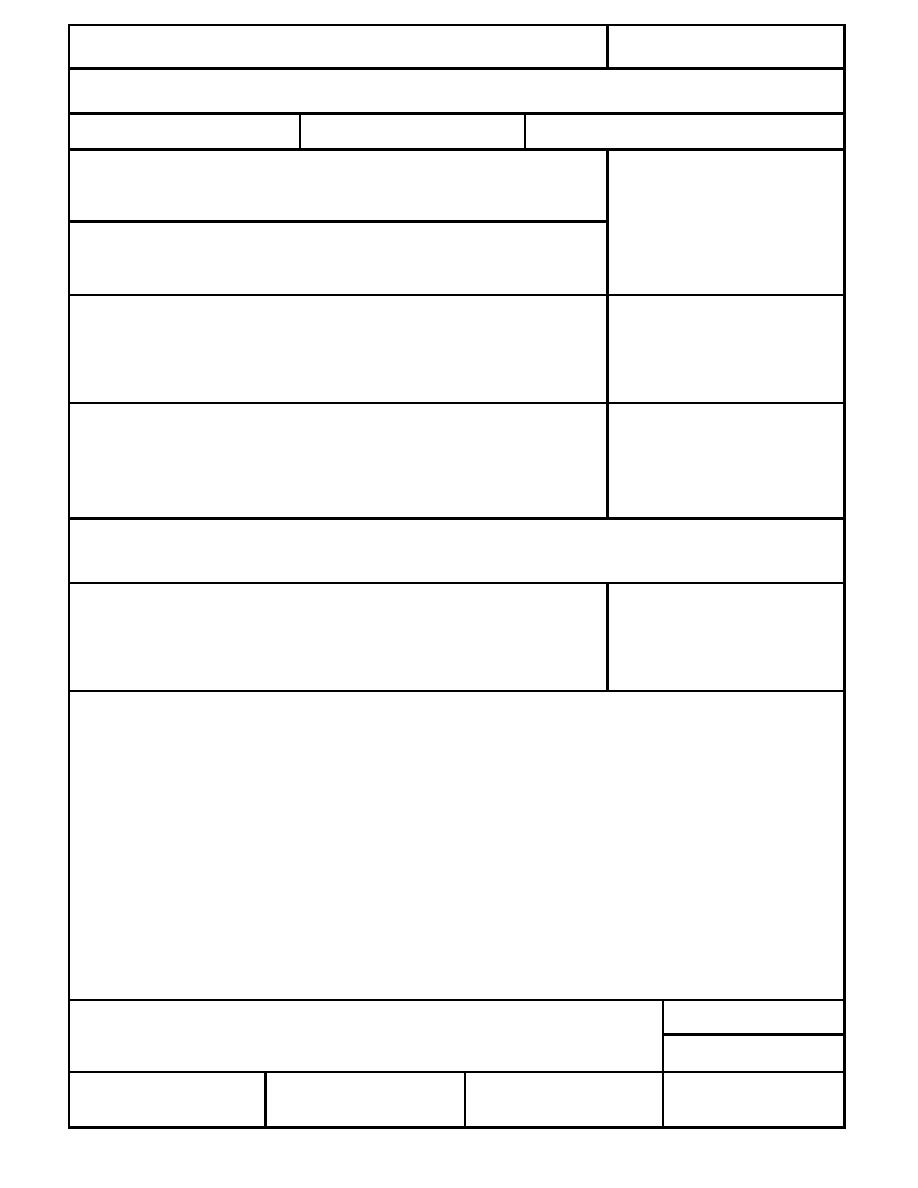
Form Approved
REPORT DOCUMENTATION PAGE
OMB No. 0704-0188
Public reporting burden for this collection of information is estimated to average 1 hour per response, including the time for reviewing instructions, searching existing data sources, gathering and
maintaining the data needed, and completing and reviewing the collection of information. Send comments regarding this burden estimate or any other aspect of this collection of information,
including suggestion for reducing this burden, to Washington Headquarters Services, Directorate for Information Operations and Reports, 1215 Jefferson Davis Highway, Suite 1204, Arlington,
VA 22202-4302, and to the Office of Management and Budget, Paperwork Reduction Project (0704-0188), Washington, DC 20503.
1. AGENCY USE ONLY (Leave blank)
2. REPORT DATE
3. REPORT TYPE AND DATES COVERED
September 1996
4. TITLE AND SUBTITLE
5. FUNDING NUMBERS
Dredging in an Active Artillery Impact Area
Eagle River Flats, Alaska
6. AUTHORS
Michael R. Walsh, Edwin J. Chamberlain, Karen S. Henry,
Donald E. Garfield and Ed Sorenson
7. PERFORMING ORGANIZATION NAME(S) AND ADDRESS(ES)
8. PERFORMING ORGANIZATION
REPORT NUMBER
U.S. Army Cold Regions Research and Engineering Laboratory
Special Report 96-22
72 Lyme Road
Hanover, New Hampshire 03755-1290
9. SPONSORING/MONITORING AGENCY NAME(S) AND ADDRESS(ES)
10. SPONSORING/MONITORING
AGENCY REPORT NUMBER
U.S. Army Environmental Center
Aberdeen Proving Ground, Maryland 21010-5401
11. SUPPLEMENTARY NOTES
12a. DISTRIBUTION/AVAILABILITY STATEMENT
12b. DISTRIBUTION CODE
Approved for public release; distribution is unlimited.
Available from NTIS, Springfield, Virginia 22161
13. ABSTRACT (Maximum 200 words)
Remediation of sediments in permanently ponded areas at Eagle River Flats, a salt marsh contaminated with white
phosphorus (WP), may require dredging. Because the Flats were used as a firing range impact area for over 40
years by the U.S. military, there is much unexploded ordnance, which will require that any dredging equipment be
remotely controlled. To treat the sediment pumped from dredged areas, a spoils retention basin was designed,
constructed, and tested. This basin contains several innovations, including a natural peaty-silt liner and a geofabric
barrier to inhibit reintroduction of WP into the environment, and is designed for the natural remediation of the WP.
The dredging system was deployed in October of 1994, with sampling indicating that WP-contaminated areas
were removed from the dredged area. An early snowfall curtailed operations shortly after initiation.
14. SUBJECT TERMS
15. NUMBER OF PAGES
Dredging
Natural remediation
White phosphorus
52
(WP or P4)
Eagle River Flats
Remote control
16. PRICE CODE
Geofabrics
Spoils retention basin
17. SECURITY CLASSIFICATION
18. SECURITY CLASSIFICATION
19. SECURITY CLASSIFICATION
20. LIMITATION OF ABSTRACT
OF REPORT
OF THIS PAGE
OF ABSTRACT
UNCLASSIFIED
UNCLASSIFIED
UNCLASSIFIED
UL
Standard Form 298 (Rev. 2-89)
NSN 7540-01-280-5500
Prescribed by ANSI Std. Z39-18
298-102



 Previous Page
Previous Page
